
Sep '04 - Aug '08
Stepping into these first days of August I finally find myself with some free time. I spent the entirety of my last year at the GSD completely enmeshed in my thesis work which was the design of a new US Capitol Building. I expected my life to get a lot more simple as soon as my thesis crit was over, but of course that didn't happen. First there were post-thesis parties, then there were portfolios to be made, graduation (oh yeah, that), and a family wedding to attend.
For the first half of the summer I was a studio instructor in the Career Discovery program here at the GSD. Exciting and exhausting and a great way to end my time at the GSD. The students are super excited about having their first taste of architecture and it gave me some time to work on my portfolio and start to sort out my job search.
As a last post to my school blog I figured it was fitting to share a bit of my thesis project (This conversation on thesis projects in general is also interesting).
A note about process
I found it incredibly useful to keep a blog about my project while I was compiling the research. Having a group of thesis-mates who were also keeping blogs gave me a bit of a nagging incentive to post regularly but it was also the medium that I used to communicate with my advisor. All entries I thought he should read were tagged for him. When I started working on the design project I switched to tumblr since its formatting and interface are better suited for a quick and dirty progress blog. The way archives are displayed is particularly nice.
Details
Advisor: Timothy Hyde
Final Jury: Diana Agrest, Henry Cobb, P. Scott Cohen, Joe MacDonald, Detlef Martin, John McMorrough, Michael Meredith, Robert Somol, Sarah Whiting.
Program: US Capitol
Spiel
"At 10am, the delegates walked to the Carpenters� Hall, where they took a view of the Room... The general cry was that this was a good Room and the question was put, whether we were satisfied with this Room."- John Adams recounting the first meeting of the Continental Congress on September 5, 1774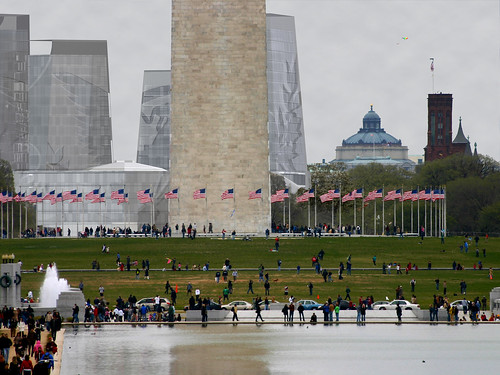
What happens when the symbolic life of a building outweighs its functional life? Since its initial construction the US Capitol has become a key symbol of democracy that now threatens the very process for which it serves as an icon: the inner workings of the Congress are actively hobbled by a prohibition against making visible modifications to the Capitol building.
Starting with intense research into the history of the Capitol Building and the Congress, this thesis proposes a new US Capitol Building that uses the fabric of Washington, DC and the structure of the American political system to align the needs of representative democracy and architectural representation.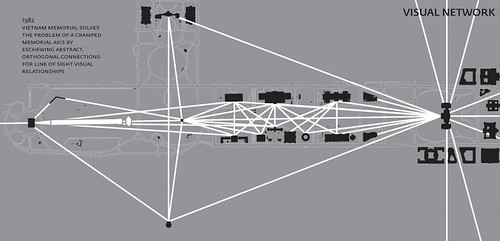
Our New Capitol reacts differently to each of the city�s main axes, an initial asymmetry that satisfies the urban-scale problem of monumentality while allowing for freedom at the scale of the building to organize the different groups of inhabitants in a productive manner. A group of towers form the main image of the building from typical viewing distances in the city. Forming the monumental element of the building, these towers are still generic enough to allow the building to weather the vicissitudes of time.
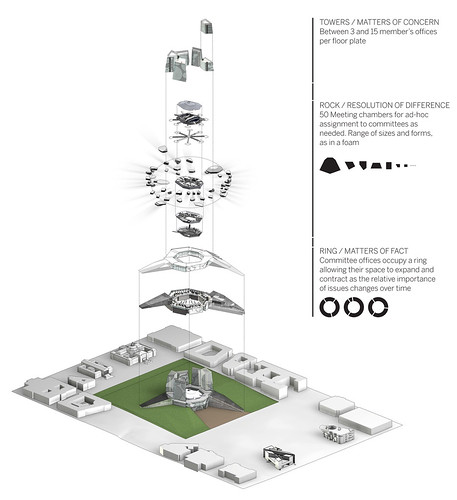
As a scheme that is expansive in both plan and section, the Congressional population is split into primary members (Senators/Representatives), committee experts, and public visitors, distributed such that they all converge on the meeting chambers now located at the very heart of the building.
Circulation within the building is focused around a large interior plaza that acts as an extension of the National Mall and a programmatic connector for the Capitol. Hovering in the center of this plaza is a rock containing all of the meeting chambers for both Congressional bodies and all of their committees. As a foamy mix of spaces, the rock contains a variety of rooms from short to tall, big to small, and orthogonal to oblique that become an ad-hoc territory of decision making. Preceding politics there is always architecture.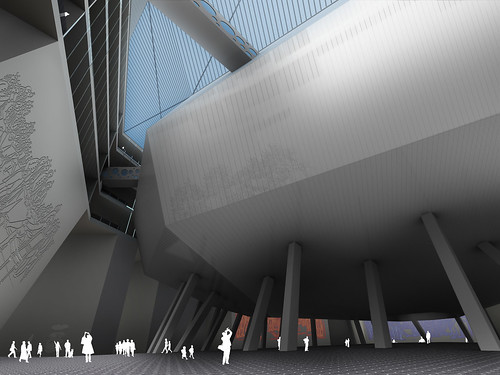
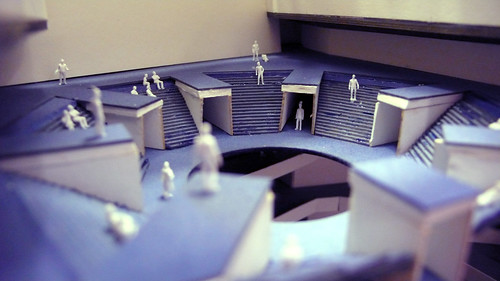
Notes on Representation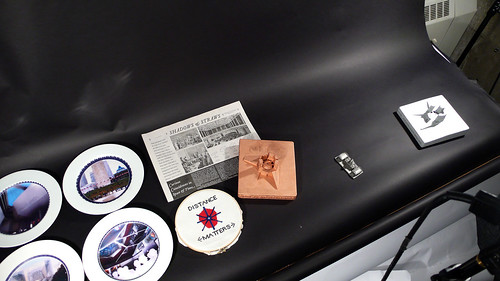
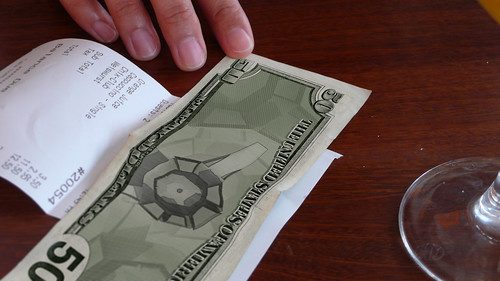
I presented the project as a set of conventional architectural drawings in black ink on white paper (even printed them on the OCE) accompanied by a series of ephemera: four plates, a cross stitch, a pair of ash trays, and a sheet of new $50 bills. Given the program of the project these forms of representation are an essential test for the project. That is to say, rather than entertaining add-ons, all of the trinkets, photographs, and other ephemera of a building such as the Capitol are equally important as the life of it as an inhabited structure. Indeed, shortsighted thinking about the symbolic potential of the building is what put the building into the problem spot it's in now. Nevertheless, these alternate forms of representation did not seem to be taken well by the majority of the jury who seemed to assume I was being ironic and refused to believe me when I answered that I was absolutely serious. I mean, come on, I designed individual borders for each plate.
Finally, a video
Our New Capitol from bryan b on Vimeo.
And in closing: Goodbye, school blog
We were young, we learned new words, we shared our vices, we collected cups, we learned rhino, and now we're done. It was great; thanks for reading.
P.S.
Since the "what now" question always follows the "I graduated" comment, I am spending the month of August in Berlin at the PROGRAM Gallery, a fantastic institution run by the inimitable Carson Chan and Fotini Lazaridou Hatzigoga.



9 Comments
Hey Bryan, nice to see someone share there experiences in grad school so generously!
I think for me the question of the symbolism of the congress building is quite important, and although you raised it as an issue, i would think that in some way you might try and subvert it somehow, as opposed to creating the same scenario as is now but with more flexible spatial potential as you have done.
I do love the project, and the plates however, I hope you use them.
Enjoy Berlin!
Aww, Bryan. I feel like crying a little. I've always enjoyed reading your blog, usually a cut above the rest. Your thesis is fantastic, too. Congrats.
very nice bryan.
i like it. do have a question though. from what i understand the symbolism of the original building is founded in the republican ideals of rome, with a few tricks and bits thrown in from freemasonry. very heady and potent stuff, all attached to a very rich and long history and for anyone who might care about such things filled with all kinds of meaning.
your symbolism is pretty generic, and in the end kind of "meaning-less". a fresh start entirely. If you are going to make a new symbol for amerika shouldn't it be legible as such to the masses, educated and otherwise?
or is the idea that it is a new era and the symbolism/associations will emerge from now on...so in a hundred years circle-punctured facades will be the symbol of american ideals and no one can use them without evoking the country ever again...kind of thing?
I should point out that the project as represented here is very briefly explained. you may find more answers in the blog and flickr process work and some of the final presentation. Or the newspaper which, unfortunately, I don't have online at the moment.
jump- although the stylization of the city and the capitol building were influenced by Rome (at the behest of Washington, much to the chagrin of Jefferson who favored a more quiet capital/ol), in the end the potency of the Capitol as a symbol was achieved by early federalist bootstrapping. The Capitol and the plan of DC were represented in as many places as possible in books and maps and promoted both as a symbol of the new nation but also something to strive towards. Indeed, the thing that we consider to be a stable symbol of American democracy, the Capitol itself, is actually quite unstable both internally and externally. You can see a brief timeline here that details a bit of the growth of the building. Most notably, it began life as a simple stone cube in 1800 and the large iconic dome was actually added 50+ years after the Capitol was first occupied. Direct renovations to the building were performed as recently as the 1960s and internal reconfigurations are always taking place. This is all to say that what we think of as a singular icon is in fact not so singular.
The mega graphic is tested here strategically. The specifics of the symbols are up for grabs, but the project was done using the Seal of the US Congress which is a slight variation on the Great Seal of the United States. Perhaps you find the symbolism arbitrary, but it is indeed imagery that has been with us since the first days of independence. The core of the argument being that a building's symbolic participation is primarily at the urban, national, and global scales which translates to photographs and other forms of reproduction. If the building-as-reproduced is equally as important as the building-as-visited you are able to enter into a much different discussion about symbolic possibilities that give very specific roles to the interior and exterior. Rather than Venturian isolation of int/ext, however, this approach attempts to develop a productive balance between the representational (outward) and daily use (inward) pressures exerted on the building such that the fate of both are intertwined and neither can overpower the other.
congratulations! it's funny and weird, but i actually remember your first posts. fantastic, fantastic blog [although i wish i had had to links to your blogger and tumblr sites earlier, i did catch on via flickr]. enjoy your time in berlin and the best of luck on all your future plans.
bryan,
without saying anything analytical or half way par with previous comments, i'll say this;
when i saw the single image on the video cover above and knowing this is a new capitol design, i had no question in my mind that this is a perfectly fitting design for capitol of our times.
cultural and political commentary is of course included as well as the humor.
it is like one of those designs that does it all at once with one single image. it has got even more perfect after seeing how you have done it inside too. best thesis project i have seen in a long time, from every angle down to 'ephemera.'
blogged.
Bryan, I got here from Orhan's blog, as I haven't been keeping up very well with the school blogs for the last year at least.
Congratulations! The project looks great, I really appreciate the video showing the interior programming of the various functional parts of the building. I also love the "ephemera"; it is disappointing the critics didn't take them on more seriously. The icon of the building should be able to help Americans remember the ideals of this country, and if those plates are displacing hannah Montana plates, all the better.
So: after a year of researching how the Congress works and rethinking how it can be symbolically represented to the nation, what are your feeling on where we are going, as a nation. Is the congressional system working for us, or do we need to rethink it? Is it time to throw out the system along with the structure, is that a possible path to get closer to the original ideals that I feel most people want?
Hey Bryan:
I also share a little of Liebchen sentiment as well; I’ve been following your blog from the beginning, and feel a bit sad that my days of living through your GSD experience are over. Thanks for sharing your experience, and I wish you the best as you transition to the professional world. Good luck. . .
Block this user
Are you sure you want to block this user and hide all related comments throughout the site?
Archinect
This is your first comment on Archinect. Your comment will be visible once approved.